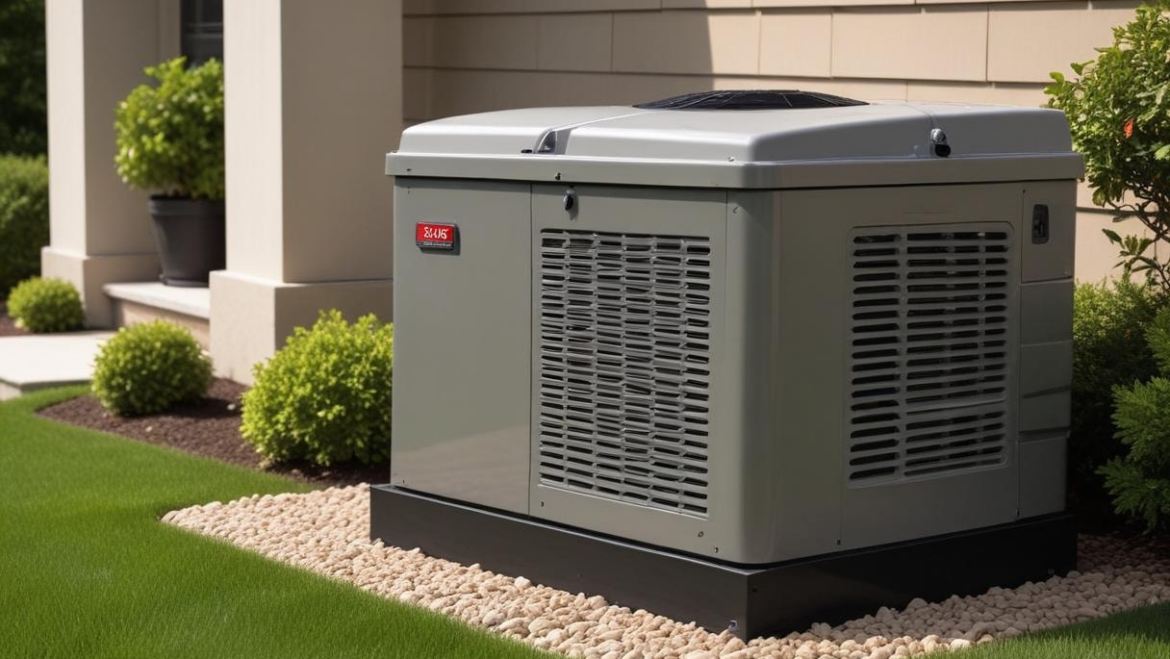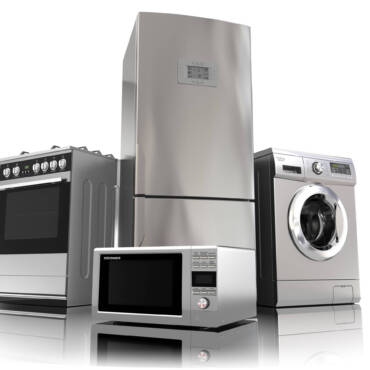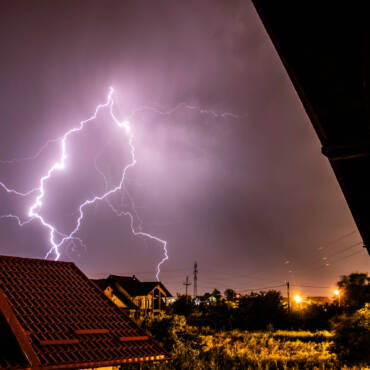Standby generators are an excellent choice for homeowners who want a permanent backup power solution. They have enough capacity to power everything in your home and can run for longer periods of time than a portable generator.
But with so many options to choose from, how do you know which model to pick?
In this article, we’ll take a look at the top residential standby generators so you can make an informed purchase decision.
What is a Residential Standby Generator?
A residential standby generator is a professionally installed unit that provides backup power to your entire house. Typically, these home standby generators use natural gas or a propane tank and can deliver at least 10,000 watts of electricity.
With such a high power output, home standby generators are capable of keeping all your appliances and other devices turned on during a power outage.
Why Should You Use a Standby Generator?
Nothing feels more frustrating than waiting for power to return after a blackout.
That’s why more and more homeowners are investing in a standby generator, as the last thing you want is to lose power from your air conditioner during a hot summer’s day.
Whole house generators work on “standby,” meaning they wait for the power to cut off. When an automatic transfer switch detects loss from the power grid, the whole house generator starts and supplies power to your electrical circuits.
Key Features to Look for When Buying a Home Standby Generator
When investing in a standby generator, you want to look for key features that improve the functionality of the unit.
Cooling Mechanisms
Whole house generators have cooling mechanisms designed to maintain safe operating temperatures with the engine. Without these, the engine will overheat and cause the internal components to fail or seize.
There are two types of cooling systems used in standby generators. These are air-cooling and liquid cooling.
- Air cooling: Air-cooled standby generators use fans to blow air over the engine and other components to dissipate heat.
- Liquid cooling: Liquid-cooled standby generators use a combination of a coolant (usually a mixture of water and antifreeze) and a radiator to remove excess heat from the engine.
Air-cooled generators are typically suitable for residential use with lower power demands. Due to their simpler design and lower maintenance costs, they are more affordable.
On the other hand, liquid-cooled generators are designed for commercial or industrial use where higher power output is needed.
However, since liquid-cooled generators have more moving parts, they require regular maintenance to ensure optimal performance.
Transfer Switch
A transfer switch plays a crucial role in linking your generator and your home’s electrical system together. This device safely directs the generator’s power to your home’s electrical circuits, preventing dangerous backfeeding from occurring.
Common residential transfer switches often fall in the 100 to 200-amp range, which is sufficient for most homes.
When selecting a transfer switch, it is crucial to match the capacity of the home’s main electrical panel and the generator’s output to ensure safe and efficient operation.
Choose a transfer switch with an amperage equal to or greater than the main service panel’s rating. Consider potential electrical load increases and consult a licensed electrician or generator professional to ensure a safe and effective setup.
Noise Levels
Whole house generators can produce significant noise, typically ranging from 65 to over 69 decibels (dB), comparable to a loud conversation or a busy street.
Perhaps you live in an area with strict noise ordinances. If that is the case, you may want to look into a quieter model to avoid disturbing your neighbors.
Look for units with noise-reduction features like fully enclosed bodies, vibration dampeners, and silencers.
Additionally, strategically placing the generator away from living areas and using a soundproof enclosure can further minimize noise impact, creating a more pleasant environment during power outages.
How to Determine Your Power Needs for a Home Standby Generator
When purchasing a home generator, you want to plan by calculating how much power you’ll need for your entire home. Consider the following tips:
Assessing Your Home’s Power Requirements
The first step in determining your power needs for a home standby generator is to assess your home’s power requirements.
Start by listing all the essential appliances and systems you need to keep running during a power outage like refrigerators, air conditioning, washing machines, and heaters.
Don’t forget to consider less obvious but essential devices like internet routers or home security systems. Calculate the wattage for each item, which can often be found on the appliance’s label or in its user manual.
Sum these values to get a rough estimate of your total power requirements. For appliances with motors, both the starting and running wattage are essential, as the starting wattage can be significantly higher.
Prioritizing Essential Circuits
Once you have a list of essential appliances and their power requirements, the next step is to prioritize which circuits you need to support.
Not all appliances and systems must run simultaneously, especially during short-term outages. For instance, you might decide that heating or cooling is more critical than running the dishwasher.
Prioritizing essential circuits is key to making sure critical systems in your home remain operational and avoiding overload on the generator.
Calculating Total Power Needs
After identifying and prioritizing your essential circuits, calculate your total power needs. This involves adding up the wattage of all the prioritized appliances and systems.
Again, it’s worth noting the starting wattage of items with motors, which can surge for up to eight circuits at a higher power level before settling to their running wattage. A good rule of thumb is to add an extra 20-25% to your total calculated wattage to ensure the generator can handle unexpected increases in power demand.
Choosing the Right Generator Size
With a clear understanding of your power needs, you can choose the right generator size. Generators are rated by their power output, measured in kilowatts (kW).
Ensure the generator you select can provide more power than your total calculated needs, including the extra buffer. Standby generators typically range from 5 kW to 32 kW for residential use.
A professional electrician can help verify your calculations and ensure that your chosen generator can safely and efficiently handle your home’s power requirements.
Top 3 Rated Residential Standby Generators to Buy
We’ve rounded up the best whole-house generators that you should consider when buying today. Take a look at these options:
1. Generac 7043 Home Standby Generator
The Generac Guardian 7043 is one of the best home standby generators on the market. This model in particular is part of the Generac Guardian Series home standby generators, which are trusted by thousands of homeowners in the U.S.
This home generator has an impressive power output of 22,000 watts on liquid propane and 19,500 watts on natural gas.
With that capacity, the Generac 7043 will have no trouble powering larger homes and running multiple high-demand appliances simultaneously.
The generator features Generac’s Mobile Link™ Remote Monitoring system. This allows users to monitor the generator’s status and performance remotely via the Mobile Link app on their smartphones.
- Power output: 22kW (liquid propane), 19.5kW (natural gas)
- Fuel type: Liquid propane or natural gas
- Noise level: 67 dB
- Cooling system: Air cooled
- Weight: 466 lbs.
2. Generac Guardian 7228 Standby Generator
The Generac Guardian 7228 standby generator shares many of the same characteristics as the 7043.
This home generator is also part of the Generac Guardian series, which means you’re getting excellent reliability, affordability, and performance.
The Generac 7228 boasts an 18,000-watt power output, which is more than enough to keep your home appliances running during a power outage.
It also comes with Generac’s Mobile Link™ Remote Monitoring system which allows you to monitor the status of your generator using a smartphone, tablet, or PC anytime, anywhere.
If 18 kW is sufficient for your needs and you prefer a lighter, slightly less expensive model, the Generac 7228 is a great choice.
- Power output: 18 kW (liquid propane, 17kW (natural gas)
- Fuel type: Liquid propane or natural gas
- Noise level: 65 dB
- Cooling system: Air-cooled
- Weight: 420 lbs.
3. Generac 3245 Standby Generator
The Generac Protector 3245 sits at the peak of our top-rated residential standby generators, and for good reason. This standby generator is part of the Protector series of Generac’s product line, which is a step above the Guardian series.
What this means is you get a home standby generator that’s built to handle incredibly high power demands thanks to its 32,000-watt power output when running on liquid propane or natural gas.
Its massive engine is backed by liquid cooling, which helps it power through even the most demanding applications. It can run essentials like lighting and appliances as well as more demanding systems like HVAC units, medical equipment, and home entertainment systems.
Its ability to deliver consistent, high-quality power makes it an excellent choice for maintaining normal household operations during prolonged or temporary power outages.
For homeowners who want the best home generator for the money, the Generac 3245 is a worthwhile investment.
- Power output: 32kW
- Fuel type: Liquid propane and natural gas
- Noise level: 70 dB
- Cooling system: Liquid-cooled
- Weight: 1781 lbs.
Fuel Options for Residential Standby Generators
Most home generators run on either natural gas or liquid propane. Choosing between these two fuel options depends on a couple of factors.
Natural Gas
Natural gas is a widely used fuel for home standby generators, offering a reliable and consistent energy source. It is delivered directly to homes through a pipeline network, making it convenient for many homeowners.
However, there are some considerations to keep in mind. Not all homes have easy access to natural gas pipelines, which can be a limiting factor for some homeowners. The initial setup cost of installing a natural gas line for a generator can be high if it is not already available.
Moreover, while natural gas is adequate for most residential needs, it may have a slightly lower energy output compared to liquid propane.
Liquid Propane
Liquid propane is another popular fuel choice for home standby generators as it’s stored in tanks and readily available in most areas.
Since liquid propane has a higher energy density than natural gas, it provides more power output per unit. If you don’t have any access to natural gas lines, then liquid propane is your best bet.
Keep in mind that liquid and propane generators require storage tanks that need to be filled regularly, thus making them more expensive than natural gas when used frequently.
Liquid propane requires proper storage as the tanks are under pressure. They should ideally be stored in shaded areas with plenty of ventilation to avoid the risk of fire hazards.
Backup Power Plan
Having a backup power plan is crucial to ensure safety when operating a home standby generator. Here are some good rules to follow:
Critical Needs Assessment
The first step in creating a backup power plan is to assess your critical needs during a power outage. Identify which appliances and systems are essential for your daily life and safety.
These typically include heating and cooling systems to maintain a comfortable and safe indoor temperature. Any medical equipment that may be vital for health should be taken into account as well.
Communication devices and sensitive electronics such as phones and internet routers should remain active during the power outage.
Understanding these needs helps prioritize what must be powered during an outage and informs the type and size of the backup power system required.
Fuel Management and Storage
Proper fuel management is crucial for ensuring your backup power system is effective during an outage. For portable generators that run on gasoline, diesel, or propane, it is important to have an adequate supply of fuel stored safely.
Regularly check and maintain fuel levels, and be aware of the shelf life of stored fuels. If using a natural gas-powered generator, ensure that your gas lines are properly maintained and that you have a contingency plan in case of gas supply interruptions.
For battery storage systems, ensure they are charged and maintained regularly to provide optimal performance when needed.
Safety Considerations
Safety should be a top priority in your backup power plan. To prevent carbon monoxide poisoning, ensure that all portable generators are used in well-ventilated areas.
Install carbon monoxide detectors in your home to monitor levels if you are using fuel-powered generators. Follow the manufacturer’s guidelines for installation, operation, and maintenance of your backup power system.
Educate all household members on how home standby generators work. Each member should be familiar with how to safely connect and disconnect devices, manage fuel, and handle any potential emergencies that may arise during an outage.
Regular Maintenance and Testing
Regular maintenance and testing are essential to ensure your backup power system is reliable when needed.
Schedule periodic inspections and servicing of your generator or battery storage system to keep them in good working condition. Test the system regularly by simulating power outages to ensure it operates correctly and powers the intended devices.
It’s worth keeping a log of maintenance activities and any issues encountered so that they can be addressed promptly. Regular upkeep not only extends the lifespan of your home backup power system but also provides confidence that it will function effectively during an actual power outage.
Get the Top-Rated Residential Standby Generators with W. Danley Electrical
- Danley Electrical is one of the leading installers of Generac-branded generators around the New Jersey area. They also offer home electrical services led by their team of experienced and licensed electricians. To learn more about their services, fill out this form or contact them at (732) 432-0164.
FAQ About Top Rated Residential Standby Generators
How long can you safely run a home standby generator?
It is possible to run a home standby generator for a week if needed. However, this will lead to engine overheating and shorten the generator’s lifespan.
Should home standby generators be grounded?
Yes. Proper grounding provides a safe path for electricity in case of a fault or lightning strike, reducing the risk of electric shock and fire.
How much do home standby generators cost?
The average cost of home standby generators ranges from $3,000 to $15,000 without installation fees.



